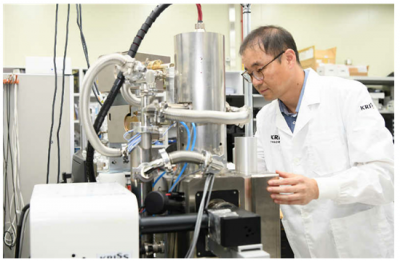Science
AI Revolutionizes 3D Reconstruction of Biological Structures

The Korea Research Institute of Standards and Science (KRISS) has introduced an innovative artificial intelligence (AI) image segmentation algorithm that can efficiently reconstruct three-dimensional (3D) structures from two-dimensional (2D) cross-sectional images. This advancement utilizes data captured by scanning electron microscopes (SEM), marking a significant leap forward in the field of microscopy and biological imaging.
The algorithm developed by KRISS allows researchers to quickly generate detailed 3D models from the often complex and intricate 2D images produced by electron microscopy. This technology not only enhances the speed of reconstruction but also improves the accuracy of the models, enabling scientists to gain deeper insights into the microstructural properties of biological samples.
Impact on Research and Industry
According to Lee Ho Seong, the president of KRISS, the new algorithm has the potential to transform various research fields, including materials science and biology. By streamlining the process of visualizing microscopic structures, researchers can focus more on analysis and interpretation rather than spending excessive time on image processing. This efficiency could lead to faster discoveries in areas such as drug development and disease understanding.
The ability to reconstruct 3D structures from 2D images also opens up new avenues for industries reliant on high-resolution imaging. These include pharmaceuticals, biotechnology, and nanotechnology sectors, where precise visualization of materials at a microscopic level is critical for product development and quality control.
Technological Details and Future Applications
The AI algorithm is designed to learn from large datasets, improving its performance over time. This machine learning approach allows it to adapt to various types of biological samples and imaging conditions. As a result, the algorithm can handle diverse challenges presented by different specimens, ensuring robust performance across applications.
In practical terms, this means that researchers can analyze complex biological phenomena—such as cellular interactions, tissue architecture, and pathogen structures—more effectively than ever before. The implications for healthcare, particularly in understanding diseases at a cellular level, could be profound, paving the way for innovative treatment strategies.
As KRISS continues to refine this technology, collaboration with academic institutions and industry partners is expected to accelerate its deployment in real-world applications. The institute aims to share its findings and technology to foster further advancements in microscopy and related fields.
The development of this AI-based reconstruction algorithm exemplifies how cutting-edge technology can enhance scientific research, bridging the gap between complex data and actionable insights. As the field of microscopy evolves, tools like these will play a crucial role in advancing our understanding of the microscopic world.
-

 Science2 months ago
Science2 months agoInventor Achieves Breakthrough with 2 Billion FPS Laser Video
-

 Health2 months ago
Health2 months agoCommunity Unites for 7th Annual Into the Light Walk for Mental Health
-

 Top Stories2 months ago
Top Stories2 months agoCharlie Sheen’s New Romance: ‘Glowing’ with Younger Partner
-

 Entertainment2 months ago
Entertainment2 months agoDua Lipa Aces GCSE Spanish, Sparks Super Bowl Buzz with Fans
-

 Health2 months ago
Health2 months agoCurium Group, PeptiDream, and PDRadiopharma Launch Key Cancer Trial
-

 Entertainment2 months ago
Entertainment2 months agoMother Fights to Reunite with Children After Kidnapping in New Drama
-

 Top Stories2 months ago
Top Stories2 months agoFormer Mozilla CMO Launches AI-Driven Cannabis Cocktail Brand Fast
-

 World2 months ago
World2 months agoR&B Icon D’Angelo Dies at 51, Leaving Lasting Legacy
-

 World2 months ago
World2 months agoIsrael Reopens Rafah Crossing After Hostage Remains Returned
-

 Health2 months ago
Health2 months agoYouTube Launches New Mental Health Tools for Teen Users
-

 Business2 months ago
Business2 months agoTyler Technologies Set to Reveal Q3 Earnings on October 22
-

 Entertainment2 months ago
Entertainment2 months agoRed Sox’s Bregman to Become Free Agent; Tigers Commit to Skubal









